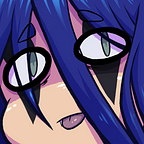Shaped By Comics: An Interview
Anthony “Tony” Wright, Digital Managing Editor for Results Radio, speaks on how his love of comic books led him to where he is now.
Walking into my father’s office in the Results Radio building in Sioux Falls, South Dakota, is like walking into a highly condensed toy store. Behind Tony Wright’s desk are shelves littered with figurines, placed purposefully amongst framed photos of family. Disney Infinity figurines — almost all of them scale replicas of Marvel characters — and the occasional Pop Funko figure rest on the lower shelves, dwarfed by the three foot tall figures of Darth Vader and Stormtroopers towering at the top. The whiteboard on the wall has a fading, and altered, Star Trek quote scrawled on it, above the ghost markings of an anime character his child drew and left on the board months ago. It is an office that draws the eyes of curious adults and enamored children, a reminder that growing up doesn’t necessarily mean chucking the joys of your childhood into the garbage. He is a nerd, and he’s proud of it.
Tony got into comics when he and his best friend went to the local 7–11. “It was because I was so competitive as a child.” Tony recounted. “When we got there it turned out that the thing he wanted to buy was the latest issue of a comic book. I thought to myself, ‘well, it he’s going to buy a comic, so am I.’” Tony still owns that same comic book he bought that day: Micronauts #2.
Ironically, the friend he went to 7–11 with that day is Chris Sprouse, who would go on to be a very successful comic artist and illustrator.
Comics continued to shape his life, even if he wasn’t able to follow in his initial dreams of being, “the next great Jim Lee, George Perez, John Byrne, or Arthur Adams (hey, I was a child of the 80s).” However, after college, one of his first jobs was as the head writer for an online science-fiction/comic book magazine.
The online magazine, one of the first of it’s kind back at the beginning of the internet, was owned by American Entertainment. At the time they were the biggest comic book distributors in the country.
Tony explained, “Since I had graduated with a degree in writing and had a lot of experience with comics (I had spent a number of years as a comic book trader/dealer, selling and trading comics at conventions), I was the perfect fit for the position. I spent the next 2 years in what was my dream job: reading comics, watching movies and anime, and writing about them. During that time I had the opportunity of interviewing some of the biggest names in comic books and science fiction, including artists Jim Lee, Rob Liefeld, editor Jim Shooter, actors Mark Hamill and Walter Koenig, and others.”
Even if the job did not last (a result of poor business practices by the parent company), Tony left with knowledge of HTML, programming and Photoshop. “I suddenly found myself as a solid writer with some serious internet skills at the beginning of the internet boom.”
Tony admits that despite being a writer himself, it was the art that initially got him invested in comics. “I fully admit I have followed some really bad comic book series strictly because of the artist. And on the flip-side, I have missed out on some really good series because I didn’t much care for the artwork.
The issue is I began collecting comics during the period I refer to as the Second Golden Age of Comics: the 80s. The popularity of comics was soaring, and with hundreds of titles to choose from, you had to have a way to sort through them; for me that was the artwork.”
Even so, the characters he connected the most with were the ones that resonated with him emotionally, not physically. The Outsiders, and the X-Men reflected to him what it felt like to be outside of most social groups, looking in. “And yet, despite everything people did to them, they continued to fight the good fight.”
“I also like the fact that many of the characters in the X-Men weren’t your typical heroes. With most early Marvel/DC comics, the heroes were tall, good-looking, chiseled white people (see: Superman, Batman, Wonder Woman, etc). Though they did have their share of the standard looking heroes, they also began mixing in characters that were more atypical. From the blue skin and tail of Nightcrawler and Mystique (minus the tail), to African-American characters (Storm), Native-American characters (Thunderbird), Asian-Americans (Psylocke, Jubilee) and even some of the first LGBT characters (Northstar).”
And of course, he can’t forget to mention Deadpool.
Nowadays, as a parent, he’s seen his love of comics carry over to his child. He loves it, the idea that his child has come to appreciate the same kind of storytelling that shaped his life so closely.
“When I was growing up, comics were still somewhat frowned upon. Though their popularity was growing, it was still ‘just for kids.’ But I could see that there was more to comics: I could see the stories, the artwork, the structure, for more than what others saw. And I think that has helped me in other aspects of life. I can look beyond what society says is acceptable, I can look beyond the mainstream, and see the good in more things.
And I think, to a certain extent, my child sees the same thing.
But at the same time, I also appreciate that they have developed their own opinions and ideas when it comes to comics. I am glad that they didn’t just follow what I did, but instead found their own things to appreciate. It doesn’t matter that we may not always agree on specific things within the genre of comic books, but that we both appreciate it as a whole.”
